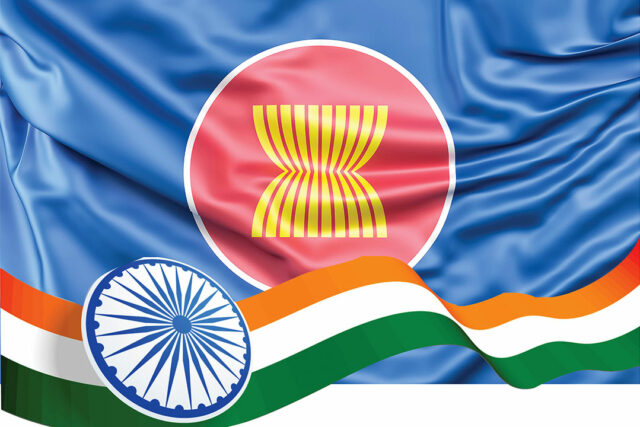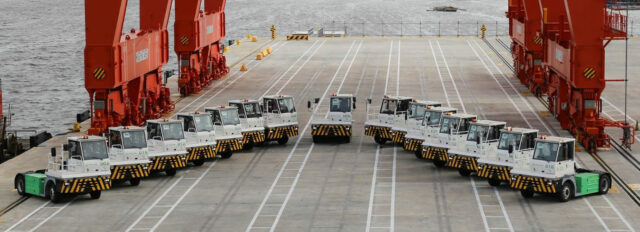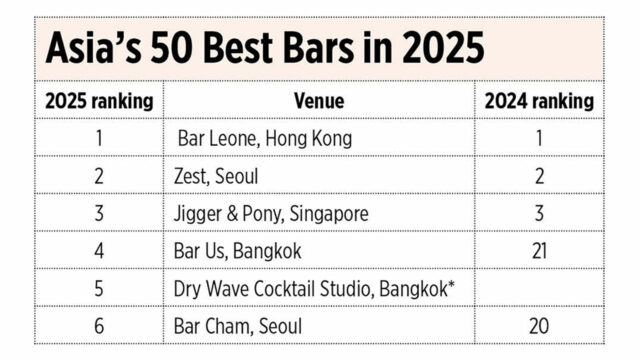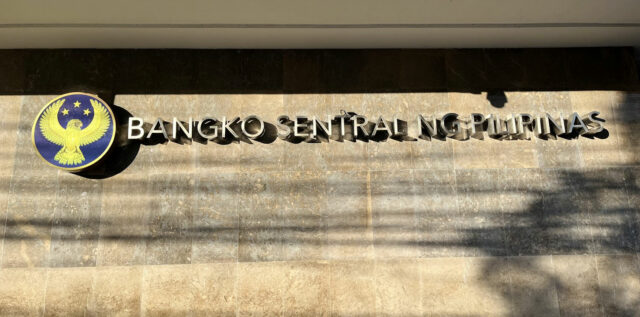WHEN Vinexpo Asia returned to Singapore this year, the buzz wasn’t as palpable as it was in 2023. In 2023, Singapore hosted its first Vinexpo Asia, but it came after a five-year hiatus, COVID and all, succeeding a previous Vinexpo Asia held in Hong Kong in 2018. However, since 2023, Vinexpo Asia was made into an annual event, alternating between Hong Kong, where it was held last year, and back to Singapore. Next year is already on the calendar as Vinexpo Asia returns to Hong Kong from May 26 to 28 at the Hong Kong Convention and Exhibition Center (HKCEC).
While Vinexpo has maintained its reputation as a premier wine platform for trade, this year’s edition felt noticeably more compact compared to its 2023 staging. There might be a bit of wine trade fatigue as holding Vinexpo three years in a row in Asia seemed too much.
But to me, one of the highlights remained the Union des Grand Crus in Bordeaux (UGCB)’s annual vintage tasting — this year the featured vintage is the legend-in-the-making 2022. The number of chateaux was significantly down, from over 75 representatives at last year’s Hong Kong Vinexpo, to around 55 this year.
THE 2022 VINTAGE
After the relatively cooler 2021 vintage, Bordeaux bounced back with what I firmly believe is the best vintage of the last decade (at the very least), considering some great vintages already existed in 2015, 2016, and 2018. The wines from 2022 are nothing short of spectacular, showcasing depth, balance, and a brilliance that is rare even for this storied region.
If 2021 was a cooler, more classical year, 2022 is its sun-drenched, opulent counterpart. The growing season was marked by ideal conditions — ample sunshine, timely rainfall, hot and very dry weather. This allowed for perfect ripening across all grape varieties, with harvest done two to three weeks earlier than usual, resulting in wines with concentrated fruit, silky tannins, and a freshness that keeps them vibrant despite their power. Alcohol levels are slightly higher than in 2021 (averaging 13.5% to 14.5%), but the wines never feel heavy, thanks to their impeccable balance.
In Pessac-Leognan, both reds and whites shone brightly, with the whites displaying stunning acidity and minerality, while the reds offered layers of dark fruit complexity. In Medoc, the reds were uniformly excellent, with each subregion, from Pauillac to Margaux, expressing its unique terroir with precision and flair.
CUSTOMARY TASTING NOTES
Again, like before, none of the 1st growths were present. For this year’s tasting, I focused on two of Bordeaux’s most iconic appellations from the left bank: Pessac-Leognan and Medoc. I tasted every single bottle presented in the Pessac-Leognan and Medoc areas, that included Grand Cru and Non-Grand Cru. Last year, I only tasted Medoc wines, 30 wines from 30 chateaux — all reds. This year, despite being a smaller ensemble, I ended up tasting 44 wines from 38 chateaux, including six whites. Because of lack of time, I missed out on tasting the right bank wines from Saint-Emilion and Pomerol.
I chose 10 wines which I felt stood out slightly more than the others. Given how good this 2022 vintage is, and how many amazing wines I tasted at this UGCB vintage tasting, this was an extremely tough list to make. Here they are in alphabetical order:
1. Chateau Carbonnieux, Cru Classe, Pessac-Leognan (Blanc). Made with 65% Sauvignon Blanc and 35% Semillon. Tasting Notes: “white peach, lychee, super vibrant, yet concentrated, racy on the mouthfeel, but balanced with fruit power, nice mineral lingering finish; Carbonnieux also has a Red Cru Classe wine, which is also amazing, but I like their white more for this vintage.”
2. Chateau d’Armailhac, Grand Cru 5th Growth, Pauillac (Rouge). Made with 59% Cabernet Sauvignon, Merlot 23%, 16% Cabernet Franc, and 2% Petit Verdot. Tasting Notes: “expressive nose of black berries, sweet cedary notes, peppercorn and other spices; on the palate the tannins are luscious and bitter-sweet, and the flavors are deep and relentless, ending in a huge bold round finish; may be the most impressive d’Armailhac I have encountered.”
3. Chateau Giscours, Grand Cru 3rd Growth, Margaux (Rouge). Made with 64% Cabernet Sauvignon, 30% Merlot, 3% Cabernet Franc, and 3% Petit Verdot. Tasting Notes: “more complex nose with violets, red roses, and black fruits; full-bodied, with firm yet silky tannins, flavorful, deep and long on the finish; I had more recently tried Giscours 2012, 2016, and 2018, all quite nice, but I feel this is its best yet from my recollection.”
4. Chateau Gruaud Larose, Grand Cru 2nd Growth, Saint-Julien (Rouge). Made with 83% Cabernet Sauvignon, 14% Merlot, and 3% Cabernet Franc. Tasting Notes: “powerful and bold, with so many flavors ranging from over-ripe berries to figs and licorice, notes of vanilla and complementary oak enhancement, long and flavorful, with coffee-latte finish; the 2022 is special to the winery as it marked their first vintage after they got certified as an organic winery – and to commemorate this, the 2022 has a special label that featured storks instead of lions in their logo.”
5. Chateau Lynch-Bages, Grand Cru 5th Growth, Pauillac (Rouge). Made with 66% Cabernet Sauvignon, 28% Merlot, 3% Cabernet Franc, and 3% Petit Verdot. Tasting Notes: “fruit bomb, with all its high fruit qualities and not its jammy-ness, good acidity to balance the power, cigar box, horse saddle, dried fruits, full-bodied, chewable tannins and long choco-mint finish; Lynch-Bages is the only Chateau I returned to my list from the 2021 vintage I reviewed last year in Hong Kong.”
6. Chateau Malartic-Lagraviere, Cru Classe, Pessac-Leognan (Blanc). Made with 79% Sauvignon Blanc and 21% Semillon. Tasting Notes: “more subtle and elegant nose, from white petals to cantaloupe and keeps opening up further, on the palate it is creamy and dense, the acid is racy, showing fresh citrus and a nice crisp finish; Chateau Malartic-Lagraviere is another estate with Cru Classe in both their White and Red, but I thoroughly enjoyed this white, the best white Bordeaux of the tasting in my opinion.”
7. Chateau Pichon Baron, Grand Cru 2nd Growth, Pauillac (Rouge). Made with 80% Cabernet Sauvignon and 20% Merlot. Tasting Notes: “very opulent nose from ripe cherries to dried red fruits, toffee, sweet oak, tobacco leaves, peppercorn, thick and viscous on the palate, with chewy tannins, and delicious lingering bitter-sweet taste; truly a wine to marvel at in its youth, but should further improve with aging.”
8. Chateau Smith Haut Lafitte, Non-Cru, Pessac-Leognan (Blanc). Made with 90% Sauvignon Blanc, 5% Sauvignon Gris, and 5% Semillon. Tasting Notes: “lovely fragrance of pineapple, dragon fruit and zesty citrus intertwined with sweet oak, rich and creamy on the palate, with a long cantaloupe-like finish; this white wine is non-Cru while its red counterpart is a Cru Classe; I still often gravitate towards their white over their red, but for 2022, both were exceptional, I just happened to like other reds more than the ir version.”
9. Chateau Talbot, Grand Cru 4th Growth, Saint-Julien (Rouge). Made with 68% Cabernet Sauvignon, 28% Merlot, and 4% Petit Verdot. Tasting Notes: “nicely complex on the nose, herbal notes interlaced with over-ripe black currant, cedary, viscous texture, with firm yet silky tannins, long and densely flavorful at the end.”
10. Domaine de Chevalier, Cru Classe, Pessac-Leognan (Rouge). Made with 65% Cabernet Sauvignon, 30% Merlot, 3% Petit Verdot, and 2% Cabernet Franc. Tasting Notes: “alluring nose, with fresh red fruits and nice oak, tannins are silky and sweet, and a lot of flavor depth from first whiff to the lingering finish; Domaine de Chevalier is one of only six wineries in Pessac-Leognan with Cru Classe in both White and Red; their white has always been a huge Pessac-Leognan favorite but for this 2022, I really appreciated their red version more.” Note that the 2022 vintage is Domaine de Chevalier’s 40th year under the ownership of the Bernard Family, and it features a special commemorative label with a galloping horse design.
FINAL THOUGHTS
The 2022 vintage is a triumph for Bordeaux, offering wines of unparalleled quality and charm. While prices may reflect the hype, these wines are worth every peso — whether for immediate enjoyment or long-term cellaring. If you’re looking for a vintage to celebrate, 2022 is it. And to go back to the original question if this Bordeaux 2022 vintage is any good, well the answer is a resounding YES.
Sherwin Lao is the first Filipino wine writer member of both the Bordeaux-based Federation Internationale des Journalists et Ecrivains du Vin et des Spiritueux (FIJEV) and the UK-based Circle of Wine Writers (CWW). For comments, inquiries, wine event coverage, wine consultancy, and other wine-related concerns, e-mail the author at wineprotege@gmail.com, or check his wine training website https://thewinetrainingcamp.wordpress.com/services/.




















